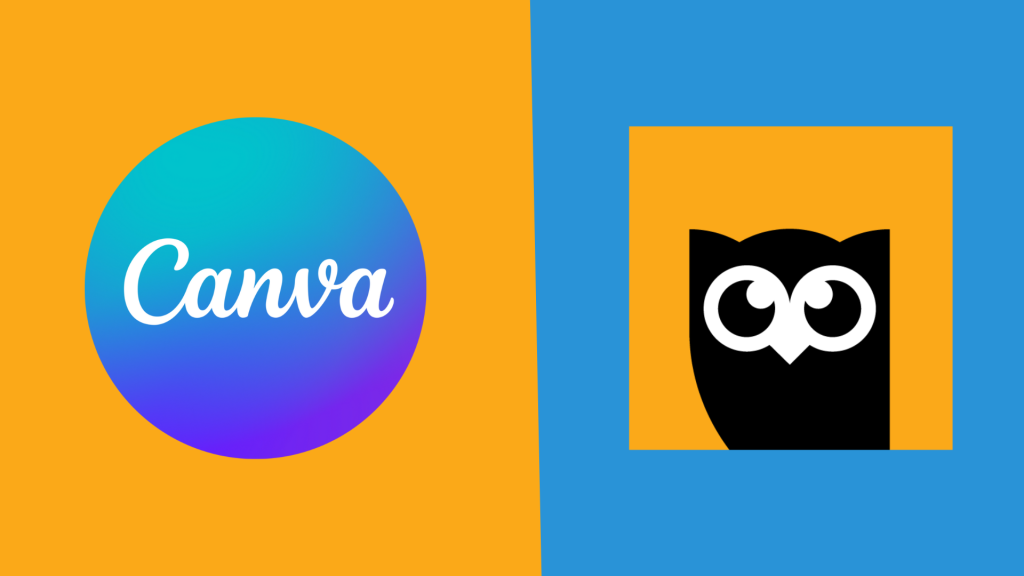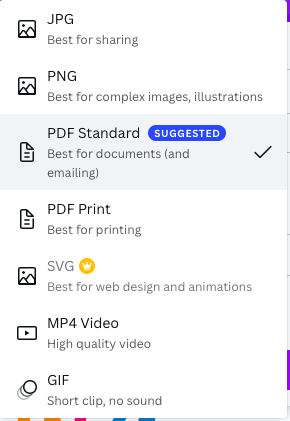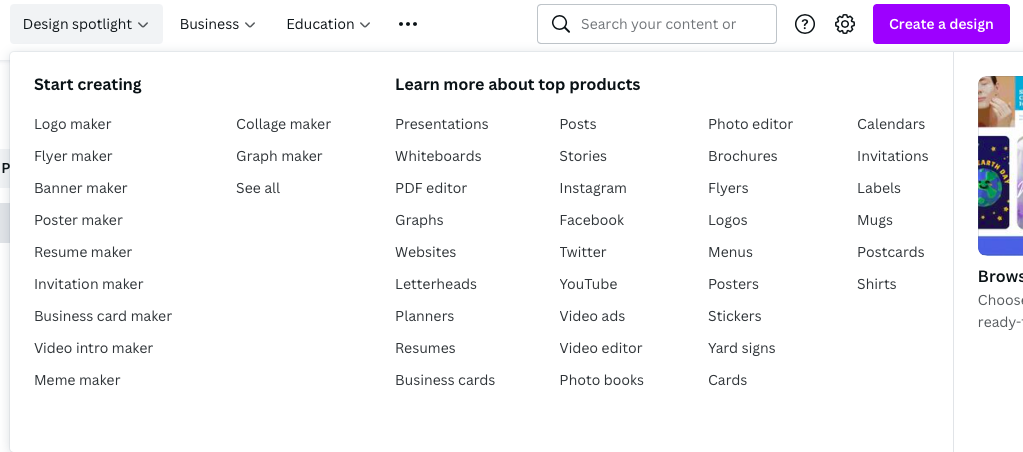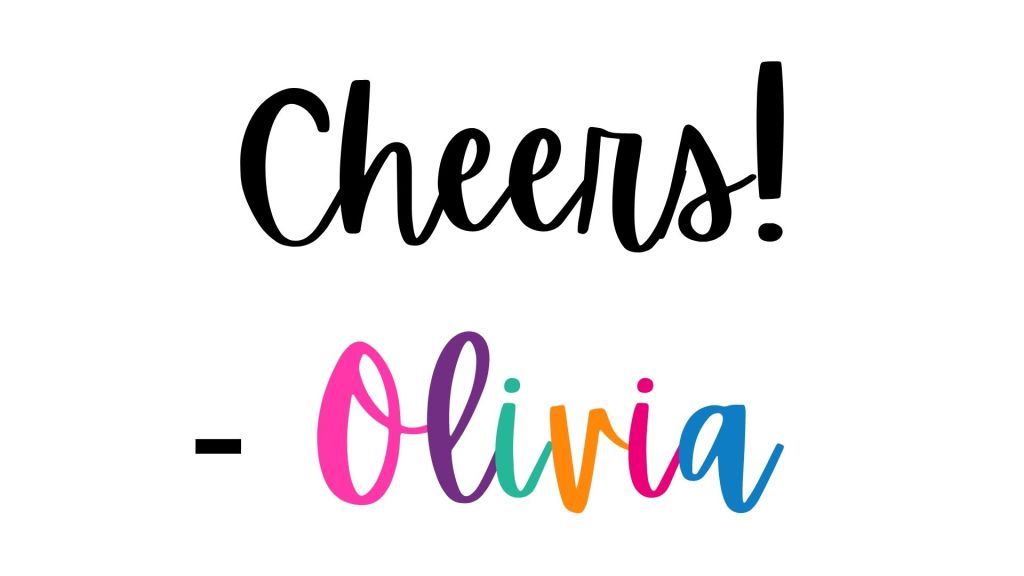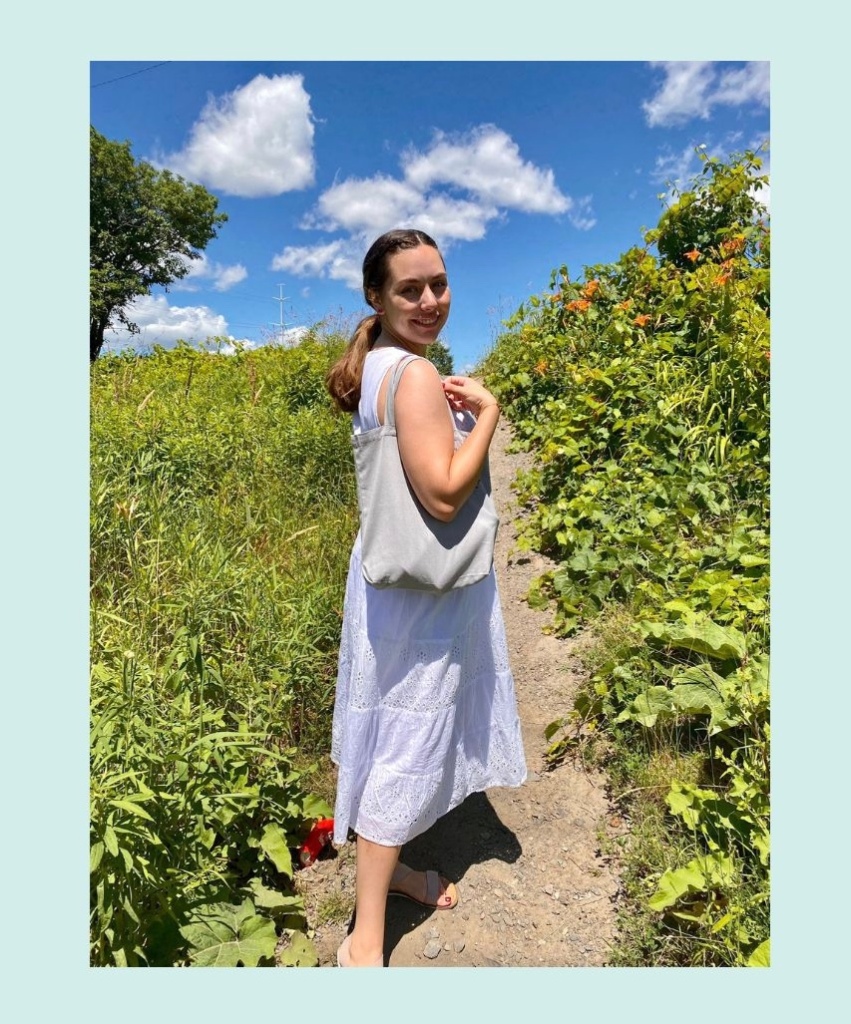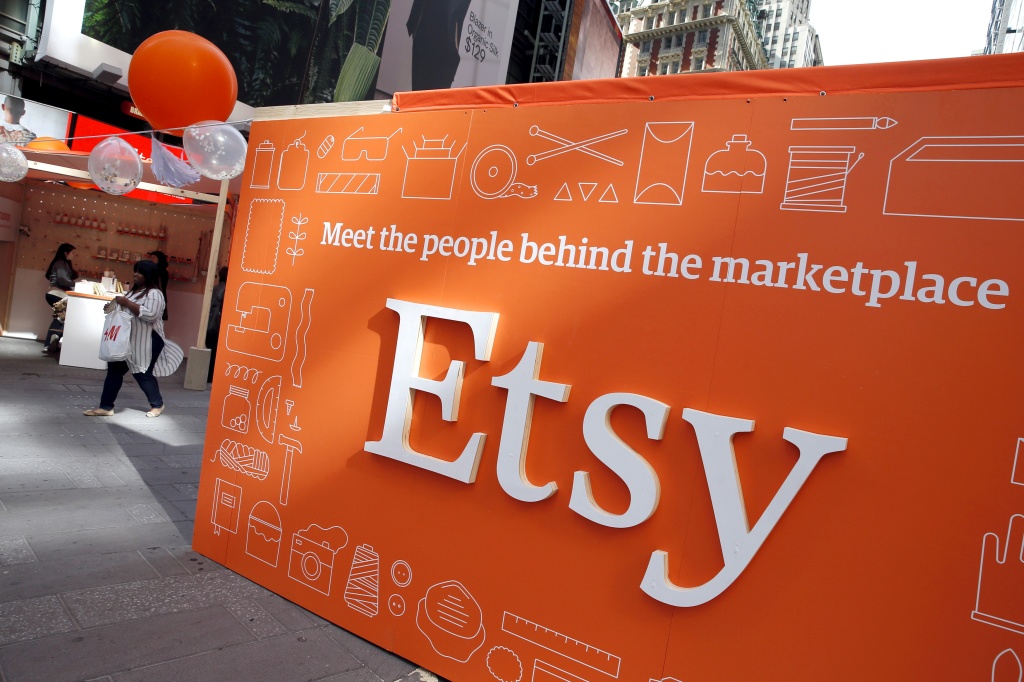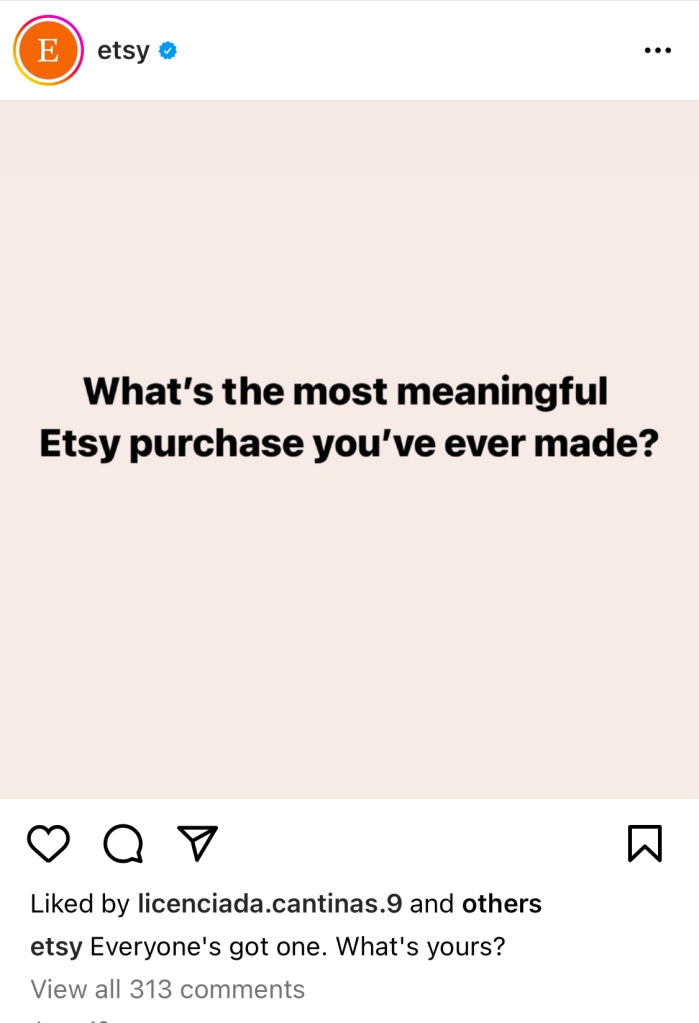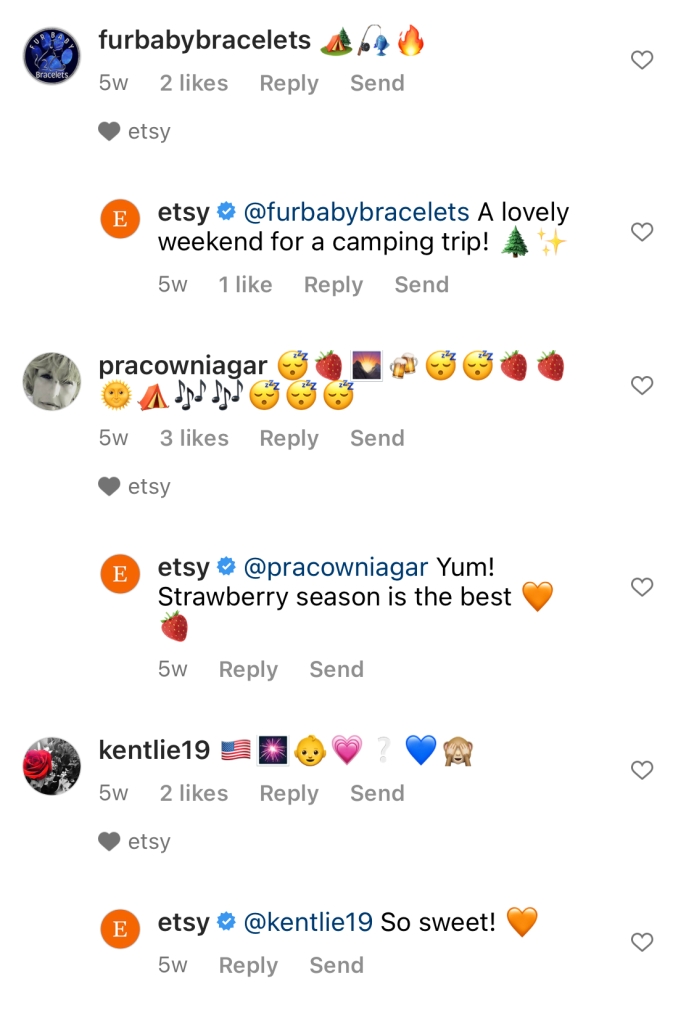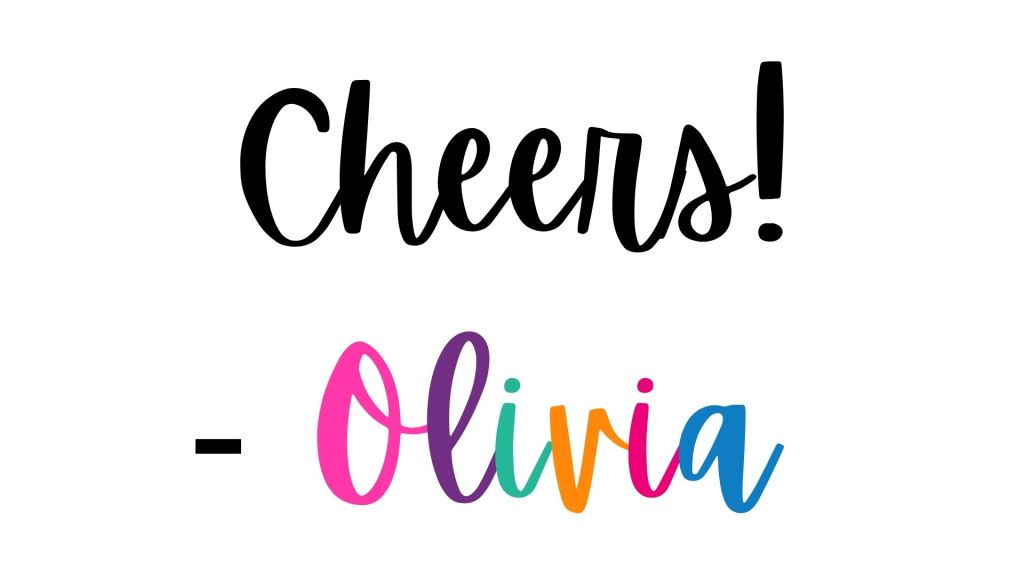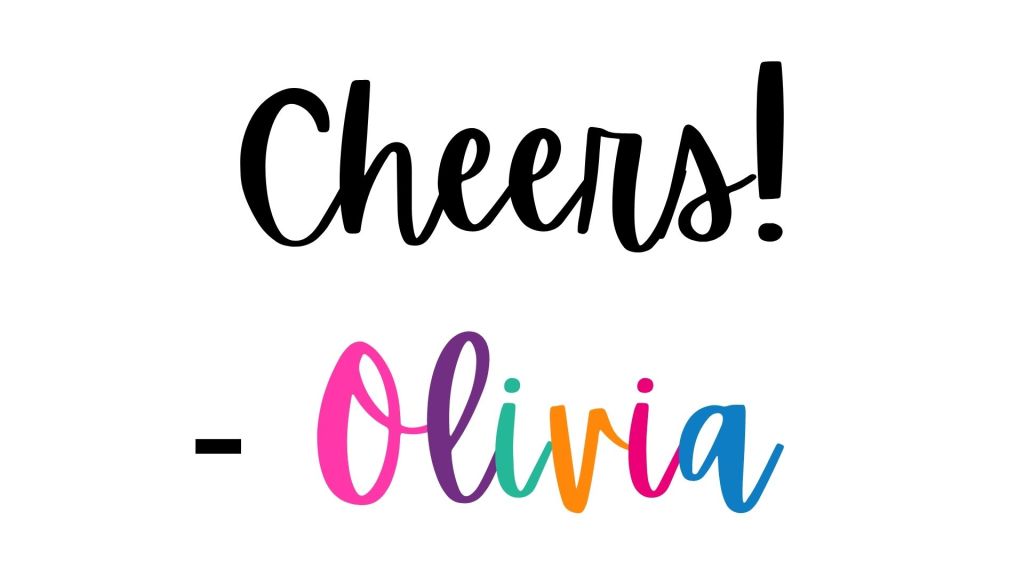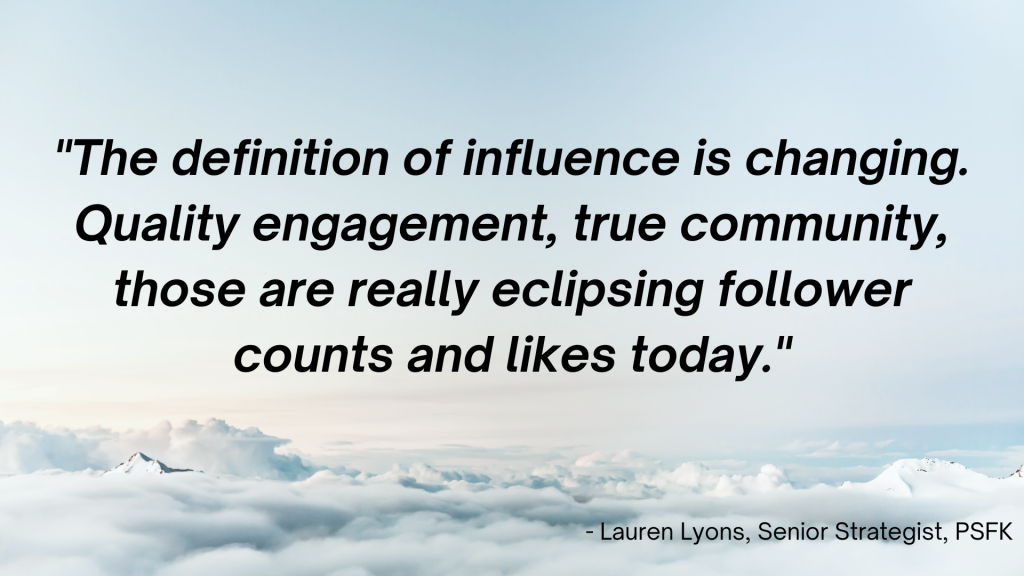
I recently attended a webinar called The Influencer Marketing Landscape. It was presented by PSFK, an organization that researches consumer, brand and retail innovation trends related to artificial intelligence, delivery services, digital transformation, online shopping, retail technologies and social commerce (PSFK, 2022). The reason I chose to attend this webinar was because throughout this social media certificate, the concepts of ‘influencers’ and ‘branding’ have been brought up many times. I was interested in learning what recent research had to say about such concepts, especially in the context of modern technology. The webinar was presented live on YouTube, but if you’re interested in watching the recording, you can click here!

One of the presenters in the webinar was Dr. Jessica Quillin, a content and retail strategist, author, and fashion editor. Dr. Quillin talked about her perspective on being an influencer and how to decide whether to engage with a brand or not. Her biggest advice was to do your homework. If you are interested in collaborating with brands to build your own, her suggestion is to do research about all kinds of brands, and weed out the ones that don’t share your values. She made a good point that even when you present another brand on your social channels, you are still representing yourself, and have to stay true to your brand.
Aside from what Dr. Quillin shared, one piece of information that I found really interesting from the webinar was how key performance indicators (KPIs) are changing in the world of social media influence. In other words, KPIs are no longer simply based on followers, likes, comments, or shares. The biggest KPI in today’s influencer environment is pure engagement. This refers to the depth of the connections created through our social media, and the longevity and growth that those connections experience. While such KPIs may take longer to observe, they are what show us the long term success or failure of our online branding.
After attending this webinar, I definitely think it would be cool to attend others. I think life-long learning is important, and given that social media is a field I am interested in, it’s important to stay on top of current trends, practices and research like those presented in this webinar.

